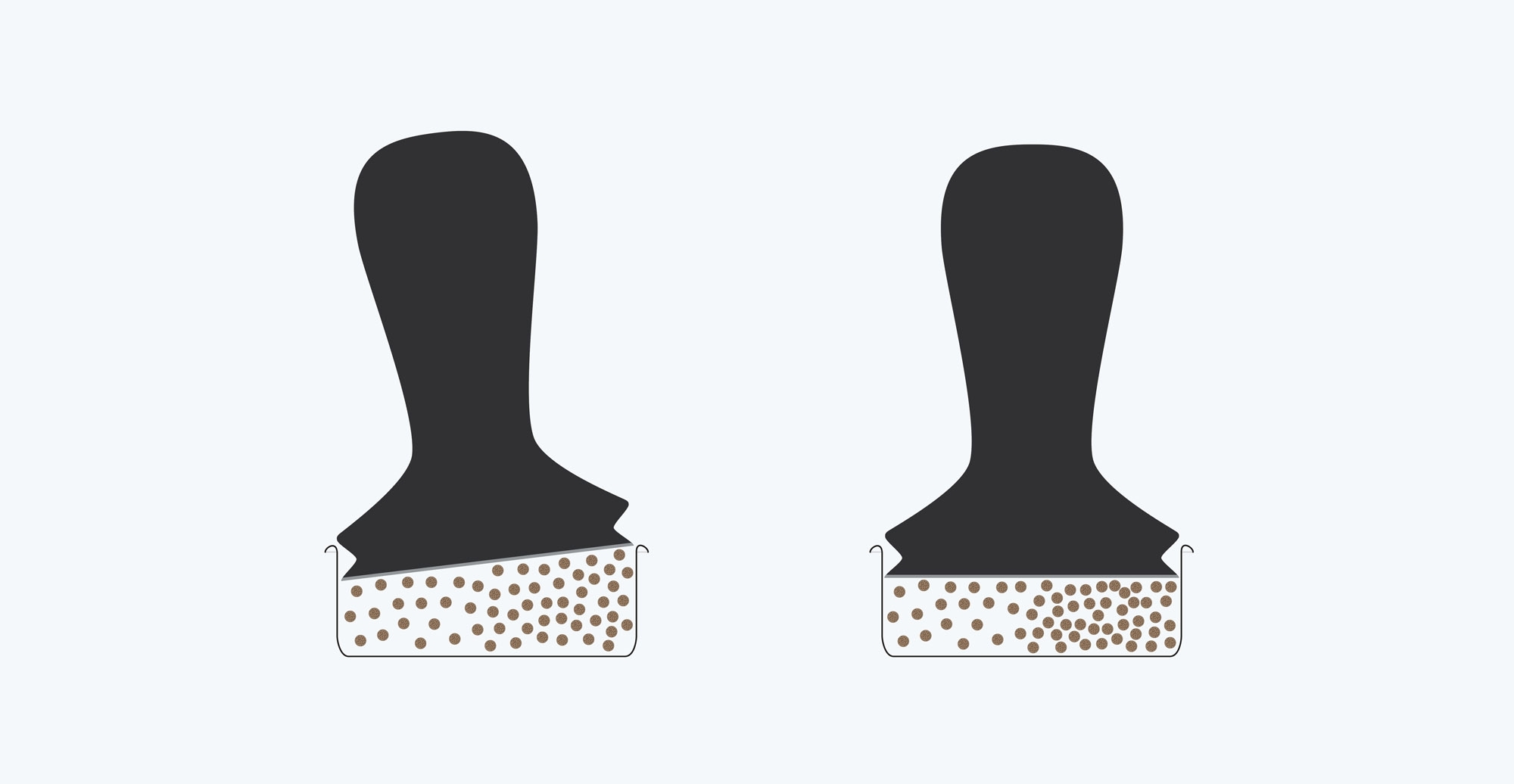With pressure effectively removed as a variable, the barista is free to focus on the most important aspect — tamping flat. This can be done by hand but is easily achieved with the various kinds of ذاتية التسوية. or automated tamper available, when used correctly. We demonstrate our preferred technique in Barista One, Lesson 1.03, ‘Tamping’.
Whatever method is used, though, it’s important that the tamper goes in perfectly straight, not just that it ends up level. Correcting the angle after partially compressing the coffee is akin to nutation: changing the angle of force on the coffee allows particles to rearrange themselves so they can pack together more tightly. This creates areas of higher density, and thus uneven flow. We’ll discuss the effects of force and nutation on packing in more detail in Chapter 4, ‘Compaction and permeability’.
 Adjusting the tamper angle after tamping allows particles to rearrange themselves into a closer-packing formation, creating uneven density in the القُرص. We discuss the effects of packing in more detail in Chapter 4.
Adjusting the tamper angle after tamping allows particles to rearrange themselves into a closer-packing formation, creating uneven density in the القُرص. We discuss the effects of packing in more detail in Chapter 4.
Once the tamp is complete, every effort should be made not to undo all that good work, beginning with removing the tamper slowly to prevent suction. Newer tamper designs such as the Barista Hustle tamper reduce the effect of suction, but it’s still important not to disrupt the القُرص by yanking the tamper out. Similarly, don’t spin the tamper, and take care not to knock the portafilter handle against any surface when brewing.
Finally, the need to insert and brew immediately is well established in baristas minds, thanks to competition, among other things. The commonly stated reason, that the heat in the group damages or even ‘burns’ the coffee, most likely isn’t true — but heating the grinds does change the effective brewing temperature, and so it will change the flavour and extraction of the coffee. With this in mind, immediate brewing is the easiest way to be consistent as well as to speed up the overall workflow.
